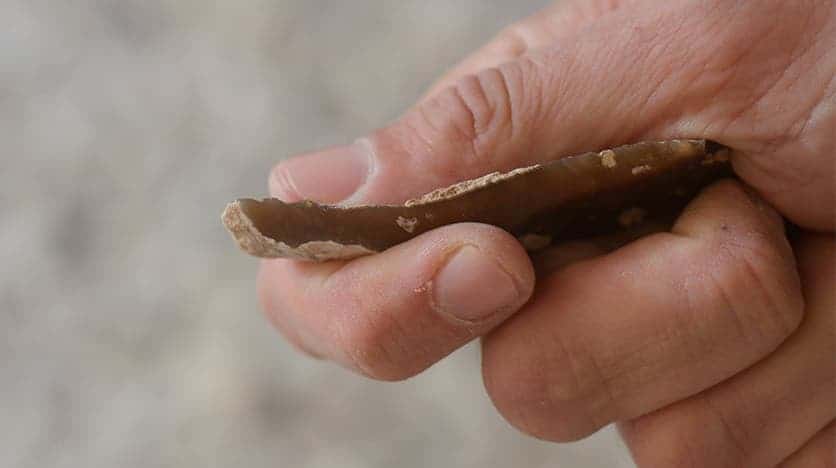
Early hominins not only mastered fire, but they also employed it to thermally treat stone tools in order to fashion sophisticated flaked blades. That’s according to recent findings reported by researchers affiliated with the Weizmann Institute of Science in Israel, following excavations at the Qesem Cave, in Central Israel, dated to between 420,000 and 200,000 years ago.
Qesem Cave is believed to have been occupied by both humans and our extinct relatives throughout the Lower Paleolithic, leaving behind a wealth of stone tools and other artifacts. Most of these tools were made of flint, a material that is widely abundant in the area.
These ancestors would fashion their tools by employing a technique called knapping, which involved using another rock or tool to chip off smaller pieces from the flint, honing a sharp edge. But, sometimes, the tool making process didn’t end there.
Rocks as a thermometer time capsules

Researchers led by Filipe Natalio of Weizmann’s Scientific Archaeology Unit analyzed two types of flint tools that seemed to have been exposed to fire in the cave. Were these tools burned intentionally or by accident? That would be extremely challenging if not impossible to determine using conventional, visual observations. To get to the bottom of things, the team combined spectroscopy and machine learning with remarkable results.
“Our approach goes beyond the visual and subjective analysis. It relies on chemical modification in the rock structure that remains for a long period of time, based on thermodynamic considerations. So the rocks act as a thermometer. Using artificial intelligence, we can pick up that signal and estimate the temperatures be it higher or lower,” Natalio told ZME Science in an e-mail.
According to the findings published in Nature Human Behaviour, stone blades were heated to a lower temperature (259°C) than flakes (413°C), while pot lids from the same cave were exposed to an even higher temperature (447°C).
According to Natalio, heating the tools at a wide range of temperatures enabled early hunter-gatherers at the Levantine site to manufacture sharper and longer blades that were more efficient for butchering small game.

“By the way, this technology only re-emerged during Middle Paleolithic, many thousand years later. They were pioneers of this technology,” the scientist added.
“Our approach provides a scientific mathematically well defined probabilistic approach to explain a probabilistic event of human behavior. This is one of the major and most exciting outcomes.”
The innovative approach employed by the researchers in Israel is versatile, enabling archaeologists to distinguish between intentional and contextual use of fire at a site. The most notable contribution of the study is the use of machine learning. “Nobody has done this so far,” Natalio told me.
In experiments meant to replicate similar thermal conditions, the researchers found that controlling the temperature of the heat-exposed flint improved blade production.
This also showed that the burnt flint tools were very likely exposed to fire intentionally.
“We do see clear differences in the estimated temperatures between different types of tools. A normal open fire would reach 600-700°C. Direct exposure of the raw material would shatter the flint, making it not useful for stone tool fabrication. So, they had to control fire together with understanding the properties of the raw material. And they were able to abstract thinking to plan in advance which procedure they would use for the fabricating a specific type of tool. There is where the intentionality comes in,” Natalio said.
This level of abstraction and complex behavior shows that early hominins were far more industrious and intelligent than previously thought.
“We can now understand that in the human lineage they were always pioneers of their time that made progress. These might not have been taken immediately, but their advances lived for long periods of time and made a difference to human evolution. The same happens today. If you feel that you are pioneering something and you are not understood, don’t give up!”
In the future, Natalio and colleagues plan on exploring other sites in the Levant and beyond in order to investigate how humans have been using fires across history. “This platform will allow us to explore many other exciting sites, be they older or younger,” he concluded.


